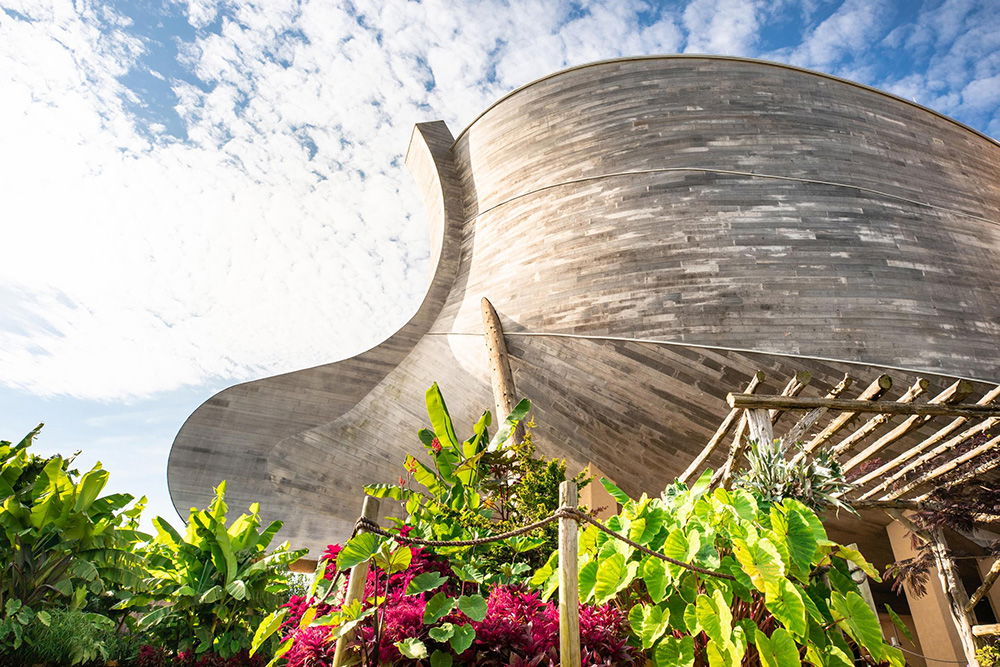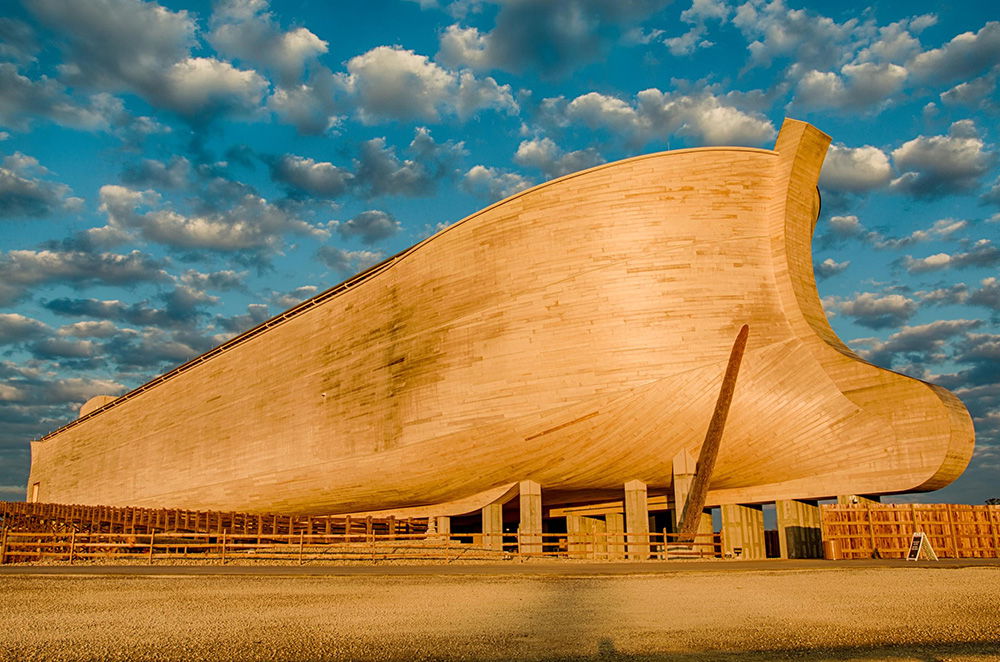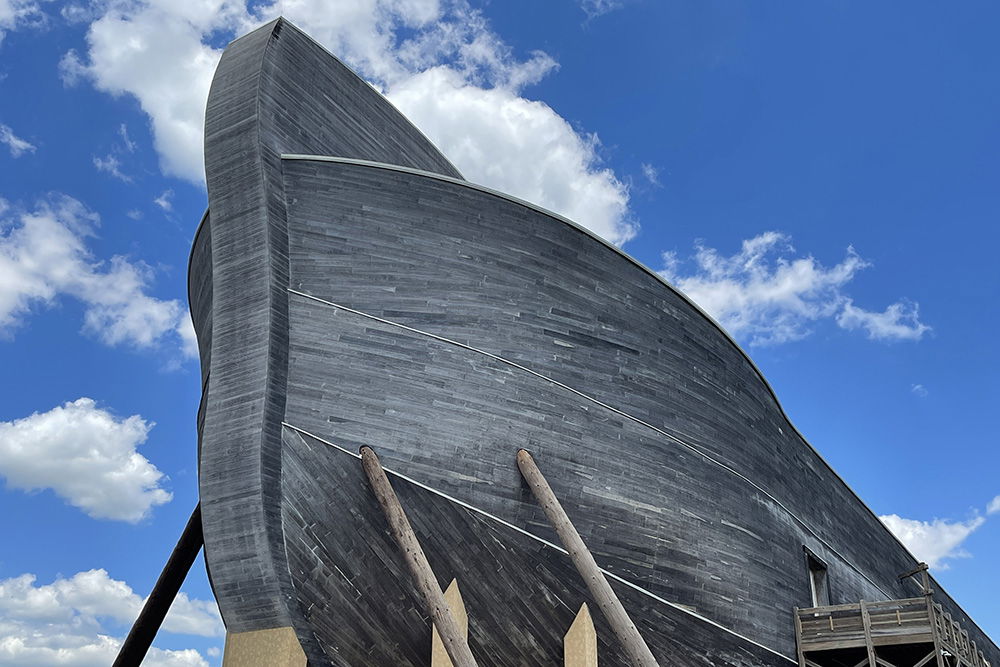The Incredible Design of Noah’s Ark
by Ark Encounter on July 27, 2023Unique design elements give our life-size Noah’s Ark an ideal blend of strength, stability, and safety. Learn more about the design below.
The Stern Projection: Not a Typical Rudder
The long protrusion at the stern is not meant to be a moveable rudder to manually steer the Ark, as some have imagined. The stern projection assists the bowfin in turning the ship to point with the wind. This skeg-like structure reflects design elements found on many of the earliest large ships of the Mediterranean.

Three Keels
Many ships feature a single keel, the prominent structure along the centerline of the hull that increases the vessel’s stability. The three keels improve stability, increase roll damping, and protect against abrasion. It would also allow the ark to remain upright after running aground while the floodwaters decreased.

The Bowfin: Not a Typical Sail
Although it looks somewhat like a sail, the large structure on top of the Ark is not intended to propel the ship through the water. Instead, the large bowfin catches the wind like a sail, but this structure is immovable and is designed to turn the ship to align with the wind, similar to how a weather vane lines up with the wind.

Front to Back?
Many modern ships feature a large underwater protrusion in the front called a bulbous bow. This fact has led some to believe that we have confused the front and back of the Ark. A bulbous bow is designed to reduce drag by minimizing bow waves at speed, but Noah’s ark would not be going fast enough to require one. Also, since the ark has no means of self-propulsion, it would be pushed along by the wind and waves with the rigid sail in the front and the immovable rudder at the back.

Incredible Design
Did Noah’s ark have a good design? Did Noah have the tools and skills needed to build the ark? In this in-depth video presentation, Stuart Burgess, a professor of engineering design at the University of Bristol (UK), teaches us about the incredible design and construction of the ark.
Start planning your visit to see our life-size Noah’s Ark for yourself today!